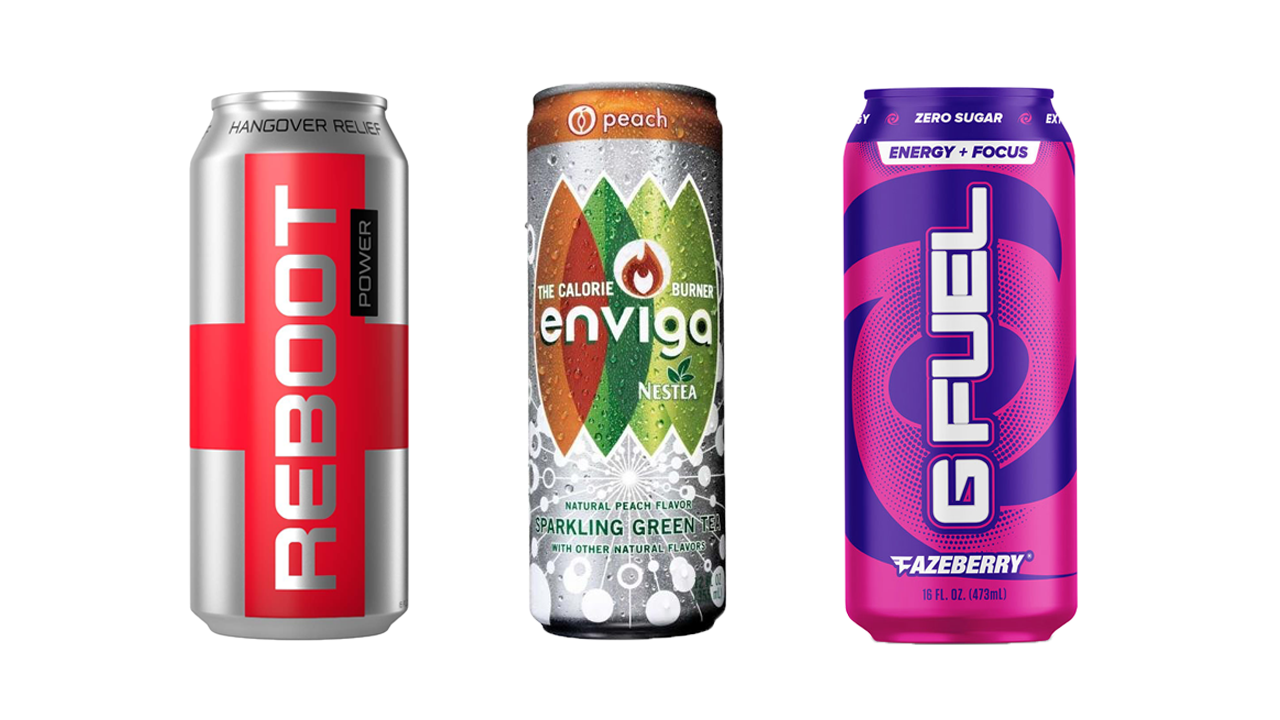
responsibility
What a kick!
Everyone’s had those moments where energy dips, the body and brain sag and it feels impossible to take the next step. But is chugging down a can of energy drink the way to go, even if it promises you wings?

From Formula 1 motor racing, cliff diving, aerobatics, extreme skiing, snowboarding, skateboarding and downhill cycling, Red Bull has cornered the market on thrills – and spectacular spills!
The distinctive red and blue snorting beast is an instantly recognisable symbol of global adventure sports – and has also created a market for energy drinks which almost didn’t exist before its emergence in the late 90s. Currently, there are in the region of 150 related products now on the market. From Monster, ReBoot, Full throttle to Rockstar, Enviga, G Fuel and Venom Energy ... the list is extensive.
In 2018 the energy drinks market was worth $53 billion, according to Investopedia, and is forecast to rise to $86 billion by 2026. It’s enough to make your heart race ...
Interestingly, this was what led to the establishment of the energy drink now available in 167 countries. Austrian Dieter Mateschitz was in Thailand when he heard about a non-alcoholic beverage which Thai truck drivers drank to remain alert. Feeling a touch jet-lagged, he tried out Krating Daeng – and the rest, as they say in the classics, is history. He sought out its founder, Chaleo Yoovidhya, and together they established Red Bull, each putting up $500 000 to start the company in 1984.
While the Krating Daeng drink was popular with blue collar workers in Thailand, Mateschitz promoted it in ski resorts in his home country as a premium product. But the brand and drink really took off with its funky “Red Bull gives you wings” ad campaigns which began in 1997, coinciding with its launch in America.

It’s an example of a great capitalistic success story, the stuff of dreams – but for some consumers, energy drinks are the stuff of nightmares. And medics and scientists agree. More and more literature is available about the side effects of overconsumption. It must be said, as with everything, that moderation is key.
So what are the issues? Studies have found that excess energy drink usage can lead to the following: elevated heart rate, a rise in blood pressure, spike in blood sugar and insulin levels, jitters and shakiness, headaches and migraine, insomnia and even addiction.
Most energy drinks contain similar ingredients – water, sugar, caffeine, certain vitamins, minerals and non-nutritive stimulants such as guarana, taurine and ginseng. Some can contain up to 100 mg caffeine per fluid ounce, eight times more than a regular coffee at 12 mg. A moderate daily caffeine intake of up to 400 mg is recommended for adults, but little research exists on tolerable levels for children.
The United States’ Department of Health and Human Services stated in a report that a quarter of all college students mix alcohol with energy drinks – and binge “significantly more often than students who don’t mix them”. It also noted a four time higher likelihood of binge consuming these mixed energy/alcohol drinks at high intensity – or six or more drinks per episode. This was considered a major factor in leading to dangerous behaviour; drink-driving, riding with an intoxicated driver and sustaining “alcohol related injuries”.
The Centres for Disease Control (CDC) released a report in 2019 which stated that while energy drinks might boost alertness and reaction time, there might be a consequent unsteadiness in the hands. This is because the amount of caffeine in drinks varies widely. In the USA it’s not a requirement to specify the caffeine content, something which other countries insist on. Caffeine is known to contribute to heart rhythm disturbances and increase both heart rate and blood pressure.
Furthermore, it can interrupt sleep patterns, cause anxiety, digestive problems and even contribute to dehydration. When the energy drink has added guarana – a purported health ingredient which also contains caffeine– the cumulative effect is worsened. The US military conducted a study and found that soldiers who drink more than two energy drinks a day had higher levels of aggression and fatigue, as well as elevated mental health problems.
The point must be made that, in moderation, there are unlikely to be any side effects. Abuse in the form of two, three or four or even more cans of these drinks on a daily basis will definitely be harmful.
